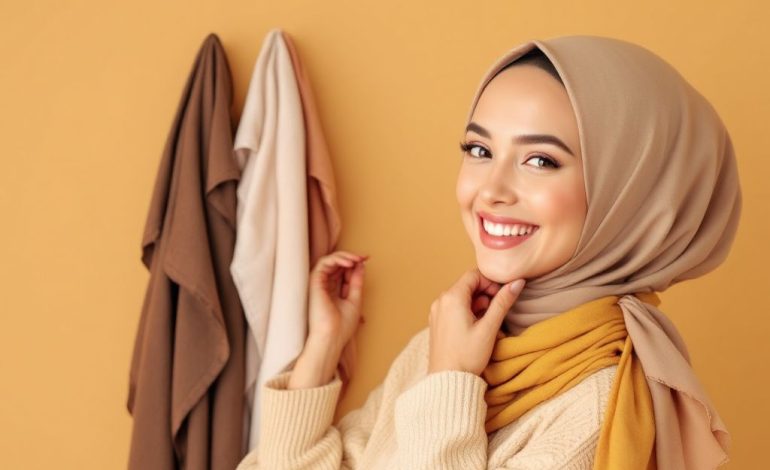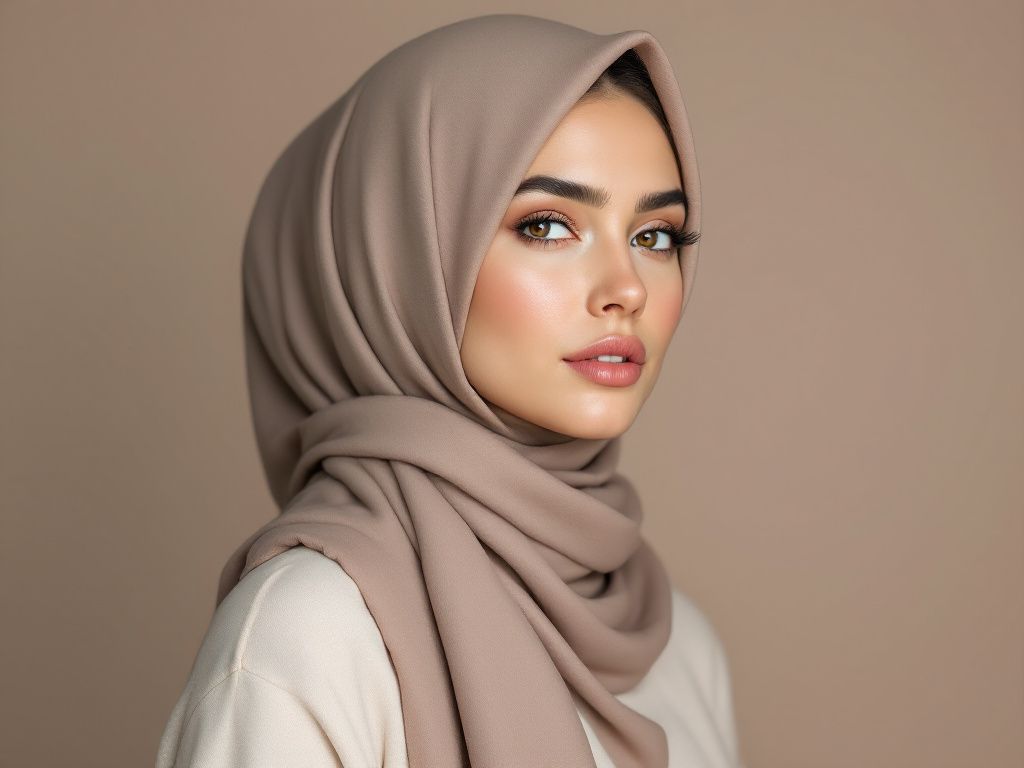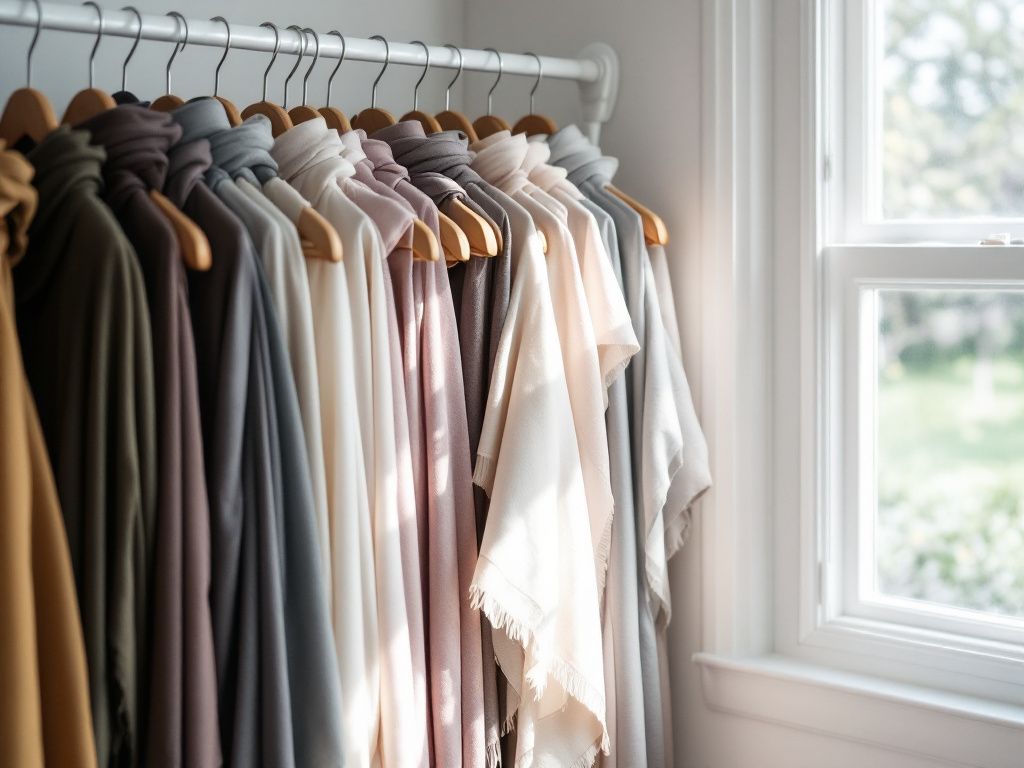Sustainable Hijab Shopping: A Friendly Guide to Making Eco-Friendly Choices

So, you’ve decided it’s time to make more environmentally conscious choices when shopping for hijabs, huh? That’s awesome! Trust me, many of us are on the same page. We all love our beautiful hijabs, but when you think about the impact our choices have on the planet, it’s only natural to want to know how to do things better. Let’s face it: we need to be more thoughtful, especially with all these climate change talks buzzing around.
What Does It Mean to Shop Sustainably for Hijabs?
First things first, let’s break down what “sustainable hijab” shopping really means. It’s not just about finding a scarf that’s labeled “eco-friendly” or “ethical.” It’s about choosing materials and brands that are striving to minimize their environmental impact. We’re talking about fabrics like organic cotton, bamboo, or even recycled fibers, crafted in a way that doesn’t harm the earth or the people making them.
Sounds simple, right? But the tricky part is knowing where to start and which boxes to tick when you’re trying to do the right thing.
Getting Started with Sustainable Hijab Choices
Maybe you’ve been getting your hijabs from local shops or online without a second thought—and that’s totally okay. But now, you might be wondering how to make those choices more sustainable, more ethical.
- Know Your Fabrics: Begin by understanding the kinds of materials sustainable hijabs are made from. Organic cotton and bamboo are fantastic choices. These materials require less water and pesticides compared to conventional cotton, which is a big win for our water sources and soil health.
- Check Brand Certifications: Certifications are like a secret language telling you whether a brand walks the talk when it claims to be sustainable. Look for labels like GOTS (Global Organic Textile Standard) or Fair Trade Certified.
- Mind the Carbon Footprint: We often forget about the trips our products make before reaching us. Try to support brands that are transparent about their supply chain and stick to local or regional options to minimize transportation emissions.
The Hunt for Ethical Brands

Wondering where to actually buy these sustainable hijabs? Let’s explore how you can find brands that care as much as you do. There’s a growing number that integrates sustainable practices into their operations, so here are a few ways to spot them:
- Transparency is Key: A brand that’s open about its sourcing and production process likely has nothing to hide. If they easily share their raw material sources or working conditions, give them a try!
- Read Reviews: Customer reviews are underrated—they can spill the reality of a product’s qualities and the brand’s ethics. Plus, a few well-rated options can become your go-tos!
- Community Endorsements: Lean into your circle of friends or online hijab communities. It’s nice to get recommendations from folks who value the same things as you.
Fabric Lowdown: Sustainable Materials for Hijabs
Arming yourself with fabric knowledge can make shopping sustainably feel a little less daunting. Here’s a quick peek into sustainable fabric options:
| Fabric Type | Key Benefits |
|---|---|
| Organic Cotton | Less water-intensive, chemical-free growth |
| Bamboo | Rapidly renewable, pest-resistant |
| Tencel/Lyocell | Made from wood pulp, biodegradable |
| Recycled Polyester | Gives new life to old plastics, reduces waste |
These choices usually bring more peace of mind, as well as comfort during daily wear. Fewer chemicals equal less irritation, especially for sensitive skin.
Creating a Sustainable Wardrobe: Mixing and Matching

You have a few sustainable hijabs ready, but how do you integrate them into your wardrobe without also having to buy separate sustainable outfits? Here’s a couple of ideas:
- Mixing Textures and Patterns: Sustainable hijabs come in beautiful patterns and subtle colors that can blend seamlessly with your existing wardrobe staples.
- Seasonless Fashion: Opt for versatile pieces that aren’t tied to a particular season. This way, a couple of high-quality sustainable hijabs can work year-round.
This reduces waste and encourages the reuse of clothing—perfect for staying eco-friendly!
Common Missteps and How to Avoid Them
We all hit a bump or two along the way when trying to shop sustainably:
- Beware of Greenwashing: You might come across brands claiming eco-friendliness without substantial proof. If something seems vague or too good to be true, dig a little deeper. Don’t settle for just any label slapped with a green leaf logo.
- Quality over Quantity: Focus on the durability of the item. A sustainable hijab that lasts five years is far better than a cheaply made one that only survives five washes.
- Educate and Share: Sometimes it’s easy to think that our contributions are small in the grand scheme, but exchanging ideas or educating a friend about sustainable shopping can spread the ripple effect of change.
The Benefits of Shopping Sustainably

Why bother, right? It’s clearly more than just a fashion statement.
- Sustainable Consumption: By wearing sustainable hijabs, you set a statement that fashion can be kind to the planet.
- Better Health: Cleaner production processes mean fewer chemicals in and on the fabric, which is better for skin health and overall wellbeing.
- Support Fair Labor: Many eco-conscious brands also champion ethical working conditions—so you’re supporting someone’s fair wage with every purchase.
Building an Impact-Driven Community
Lastly, it’s delightful to see the burgeoning community around sustainable fashion. Active participation in eco-friendly movements can amplify your voice in caring for the planet.
- Host or Join Hijab Swaps: This can be a fun way to revamp your hijab collection without any purchases, fostering both new connections and a circular fashion economy.
- Support Sustainable Fashion Community Events: Attend conferences, workshops, or webinars focused on ethical fashion for continued learning and to meet like-minded individuals.
Remember, It’s Not About Being Perfect
And, don’t be too hard on yourself—this is an ongoing journey. You might not be able to perfect your wardrobe overnight, but every step towards sustainable hijab shopping is a meaningful progress. It’s like piecing together a patchwork quilt; stitch by stitch, step by step, we create something beautiful and responsibly enjoyed.
There you have it—whether you’re scouting for your next favorite piece or wanting to overhaul your wardrobe sustainably, stepping in is already a great achievement. Here’s to a graceful transition into sustainable hijab shopping—an adventure worth delving into!
Happy sustainable shopping!
Frequently Asked Questions
How often should I wash my face mask to prevent maskne?
To prevent maskne, it is crucial to wash your face mask regularly. For fabric masks, wash them after every use, similar to how you would wash your underwear[2][3][4]. Disposable masks should be tossed after each use to prevent the buildup of bacteria and other contaminants[3][5>.
What type of skincare products are best for preventing maskne?
For preventing maskne, use skincare products that are oil-free or noncomedogenic. These products, such as gentle cleansers, moisturizers, and sunscreens, help prevent clogged pores and reduce the risk of acne. Look for products containing salicylic acid or benzoyl peroxide for their acne-fighting properties[1][3][4>.
How can I reduce friction and irritation caused by wearing a face mask?
To reduce friction and irritation, choose a mask that fits well and is made from breathable fabrics like cotton or bamboo. Loosen the mask straps, use pads under the straps, or consider a headband-style mask to minimize friction. Taking brief breaks to remove the mask and allow your skin to breathe can also help[2][3][5>.
What are some additional tips to prevent maskne while wearing a face mask?
In addition to regular mask washing and using the right skincare products, avoid touching your face, skip makeup or use noncomedogenic makeup, and moisturize your skin to keep it hydrated. Also, limit the use of active ingredients like retinol or benzoyl peroxide during the day when wearing a mask, and consider using a topical antimicrobial cream to prevent bacterial buildup[1][3][4>.
References






